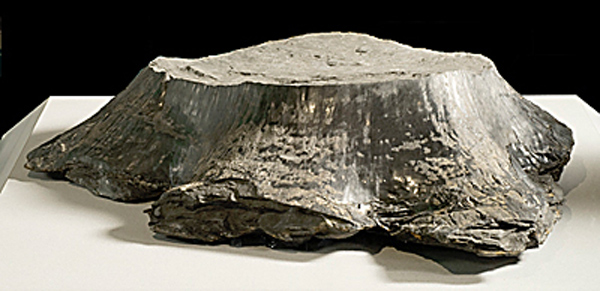Fossilized Forest In Downstate Coal Mine Offers A Peek At Illinois' Steamy Distant Past
By JoshMogerman in News on May 6, 2012 9:00PM
Illinois’ countryside has not always been dominated by fields of corn and soybeans. Long ago, it was the site of one of the world’s first rainforests, a steamy terrain dominated by tall, asparagus-like trees, patrolled by 6-foot centipedes and buzzed by crow-sized dragonflies. Last week, scientists got a unique look at that long-departed landscape with the discovery of the world’s largest fossil forest in a downstate coal mine.
Fossilized stumps and roots from ancient trees are regular finds in Illinois mines, where they have been preserved in clay above and below coal seems. But the scale of this 307 million year old fossilized forest---which includes signs of a river the size of the Mississippi running through it---is unlike anything geologists have ever found. It likely extends more than 100 miles from the small portion near Galatia, IL that has been explored and stands as at least 50-times bigger than similar finds elsewhere. Despite its massive size, the fossilized forest is not easy for researchers to look at:
Curiously, the forest can be viewed only from below. The scientists crane their necks, illuminating the ceiling with miners’ helmet lamps. Hundreds of millions of years ago, trees and other plants grew atop thick peat that eventually compressed into coal; when that was excavated, the forest’s fossilized remains could be seen in the mine’s shale ceiling.The downstate coal forest lacks fossils from animals because the flooding which spelled an end to that ecosystem was gradual, leaving the critters plenty of time to slither, fly or amble away. Ironically, burning of the coal remains of ancient trees and plants is speeding the forces of climate change illustrated by the find in a way that could make similar escape for many of the world’s contemporary species unlikely (yeah, we know, bring on the trolls...).
